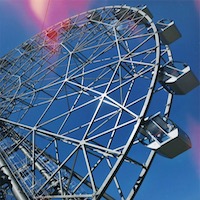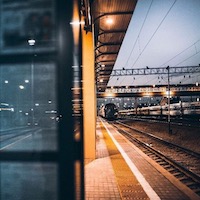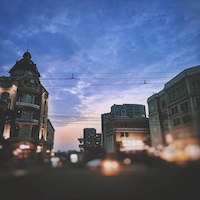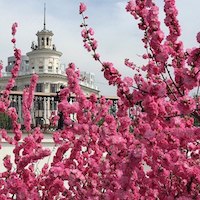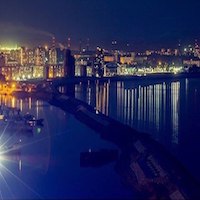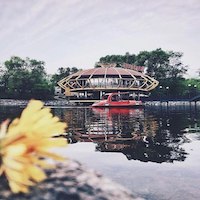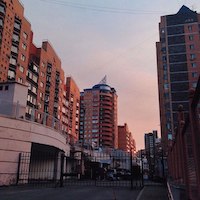
Overview
- It is a major economic, transport, logistic, political, and cultural center of the Russian Far East.
- The distance from Khabarovsk to Moscow is about 8,400 km.
- The population of Khabarovsk is about 607,000 (2015), the area - 386 sq. km.
- The phone code - +7 4212, the postal codes - 680000-680150
History
Until the middle of the 19th century, the territory of present Khabarovsk, in accordance with the Treaty of Nerchinsk, was a neutral territory between the Ch’ing Empire and the Russian Empire. In 1858, an agreement was signed, according to which the entire left bank of the Amur became part of the Russian Empire, the right bank passed into the possession of China. After the agreement was signed, a military post named Khabarovka was founded. It was named after Yerofey Khabarov, the Russian explorer of the 17th century. In 1865, the population of the settlement was 1294 people, mostly soldiers and officers. By 1880, it was quite a large settlement with 2036 people. In 1893, Khabarovka was renamed in Khabarovsk. During the Civil War, power in Khabarovsk changed several times. In 1922, it became part of the Russian Soviet Federative Socialist Republic. After the establishment of Soviet power, Khabarovsk intensively developed in the economic, social and cultural spheres. In 1925, the railway bridge across the Amur River was restored. In 1936, the railway between Khabarovsk and Komsomolsk-on-Amur was built. In 1934-1939, the city became the administrative center of the Khabarovsk region. Today, Khabarovsk is a large industrial, transport, cultural, educational and scientific center of the Far East. In 2002, Khabarovsk received the status of the administrative center of Far Eastern Federal district of Russia. In 2008, the railway station was completely renovated. In 2012, Khabarovsk received the honorary title of “City of Military Glory.” In the late summer - early autumn 2013, Khabarovsk was exposed to flooding, which became the strongest flooding for the entire observation period from 1897.
Features
The climate of Khabarovsk is moderate, monsoon, with cold and dry winters and hot and humid summers. The average temperature in January is -19.8 degrees Celsius, the average temperature in July is +21.3 degrees C. The city is a large transportation hub connecting the north and the west of Russia, Primorye, and Sakhalin. The Trans-Siberian Railway goes through it. Khabarovsk is a connecting point of the federal highways Chita-Khabarovsk, Khabarovsk-Vladivostok (M60-Ussuri), Khabarovsk-Komsomolsk-on-Amur and the highway under construction Khabarovsk-Nahodka. Khabarovsk airport offers flights to Moscow, Vladivostok, Yuzhno-Sakhalinsk, Novosibirsk, Yakutsk, Krasnoyarsk, Irkutsk, Bangkok, Seoul, Harbin. From the high bank of the Amur River, you can see Chinese territory. Khabarovsk Bridge as well as and the cliff and the monument to Muraviev-Amursky are depicted on the Russian note of 5,000 rubles. You can try dishes from around the world in the restaurants of Khabarovsk: Russian, Ukrainian, Italian, French, Bulgarian, Japanese, Korean, Chinese, Uzbek, Azeri and other cuisines.
Places
Museums
- The Museum of Local Lore
Named after N.I. Grodekov (Shevchenko Street, 11). One of the oldest museums in the Far East, founded in 1894, with more than 400 thousand different exhibits; - Far Eastern Art Museum
(Shevchenko Street, 7). The museum has the largest collection in the Russian Far East. You can see paintings made by Vereshchagin, Shishkin, Repin, Titian, Rubens, Rembrandt. There is also a collection of ancient weapons; - Khabarovsk Archeology Museum
(Turgenev Street, 86). The exhibition tells about the history and ancient cultures of the Amur region. The museum building is a monument of architecture, culture and history of federal significance; - The Museum of the Far Eastern Railway
(Vladivostokskaya Street, 40). Here you can learn more about the history of the construction of the Ussuri Railway (Vladivostok - Khabarovsk) as part of the Great Siberian way (the famous Trans-Siberian Railway); - The Museum of the City of Khabarovsk
(Lenin Street, 85). It is the youngest museum in the city opened in 2004. The pride of the museum is the collection of weapons and firearms of the twentieth century; - The Military Historical Museum of the Far Eastern Military District
(Shevchenko Street, 20). The museum is located in a historic building on the banks of the Amur River in the historic center of the city. It has a collection of battle banners of the Civil and the Great Patriotic War, domestic and foreign firearms and bladed weapons, orders and medals, uniforms and equipment, paintings and drawings, military and political posters. In the courtyard of the museum, you can find an exhibition of military equipment; - The Art Gallery named after A.M. Fedotov
(Muravyov-Amursky Street, 47). More than 700 paintings, drawings and objects of traditional art of indigenous people of the Amur region.
Theaters
- Khabarovsk Theater of Drama and Comedy
(Muravyov-Amursky Street, 25) - Khabarovsk Puppet Theater
(Lenin Street, 35) - Khabarovsk Musical Theater
(Karl Marx Street, 64) - Khabarovsk Youth Theater
(Muravyov-Amursky Street, 10, 12) - Khabarovsk Philharmonic Society
(Shevchenko Street, 7) - Pantomime Theater “Triada”
(Lenin Street, 27) - White Theater
(Sheronov Street, 67)
Parks
- The regional park named after N.N. Muravyov-Amursky
(Shevchenko Street, 15)
The park is situated along the embankment of the Amur River. Here you can find the famous monument to N.N. Muravyov-Amursky, the governor-general of Eastern Siberia; - Khabarovsk Puppet Theater
(Lenin Street, 35) - Khabarovsk Musical Theater
(Karl Marx Street, 64) - Khabarovsk Youth Theater
(Muravyov-Amursky Street, 10, 12) - Khabarovsk Philharmonic Society
(Shevchenko Street, 7) - Pantomime Theater “Triada”
(Lenin Street, 27) - White Theater
(Sheronov Street, 67)
